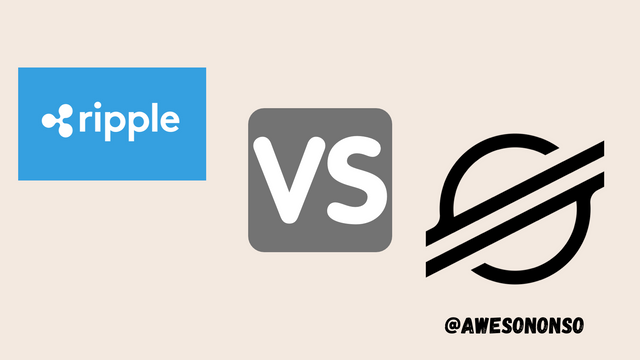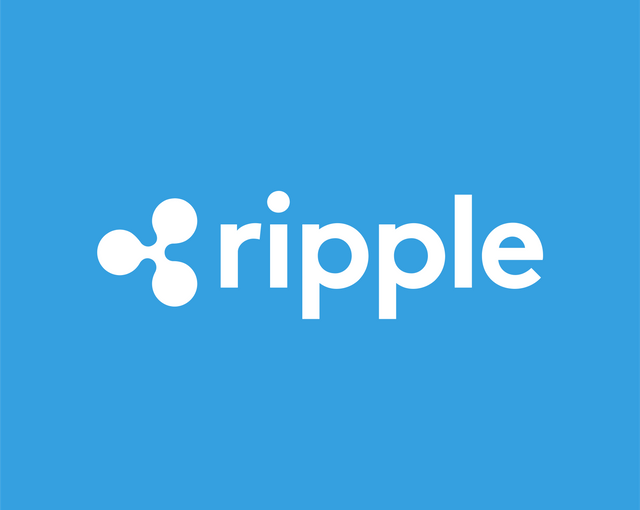Crypto Academy week 9 - Homework post for @alphafx
INTRODUCTION
The crypto world, just like every other universe of learning, has tons of concepts and terms that explain what it is and how it works. A person can be months into crypto without knowing some terms but this isn’t the case for the term “blockchain”.
“Blockchain” is one of the terms newbies always come across during their crypto infancy. It’s so popular that even people outside the cryptoverse have come across it someway. I, for one, knew a bit of what a blockchain was years before I delved into cryptocurrencies. For me, the concept never gets old and I get to learn more and more everyday. The lesson by prof @alphafx is really elaborate even with the few blockchains mentioned and described. In this post, I will tackle the task that goes:
Give a detailed comparison between two blockchain platforms of your choice.
Going through the lesson, I was intrigued to learn that Stellar was built similarly to Ripple. So although Ripple was not highlighted in the lesson, I would like to compare it to stellar.
Off we go...
RIPPLE
HISTORY AND CONCEPT
Ripple was cofounded by Chris Larsen and Jed McCaleb in 2012 and developed by their company, OpenCoin. OpenCoin was renamed Ripple Labs Inc. in 2013 and later renamed to just Ripple in 2015. The first network usage of the Ripple protocol was with Earthport’s system.
Ripple is built on a distributed open internet protocol and consensus ledger. The platform provides financial institutions several platforms for cross-border payments including xCurrent, xRapid and xVia under RippleNet.
The Ripple protocol(RTXP) is described as a Real-Time Gross Settlement (RTGS) system because it allows for banks to make instant transfer of funds around the world with little or no wait period. It focuses on improving speed, efficiency and cost effectiveness. Normally, Cross-border bank transfers cost a lot of time and money because transactions go through third parties that always charge a fee. Ripple tackles this by linking banks together and bypassing middlemen or third parties. This is accomplished through their Distributed Ledger Technology.
Ripple’s digital currency is known as XRP and it is used by banks and financial institutions to increase liquidity between different currencies.
PROS OF RIPPLE
1. Transaction speed:
Ripple is faster than traditional payment methods like SWIFT. It provides almost instant settlements that averages at 4 seconds as against 2-3 days. The blockchain allegedly handles an average of 1500 transactions per second.
2. Low transaction fees
A huge hinderance when it comes to cross-border transfers is the discouraging amount in fees. Ripple is determined to provide safe international transfers with negligible costs attached. The cost of using Ripple is actually 0.00001 XRP. With the price of XRP at around $1.6 as of writing, the system is basically free. Who doesn’t like free stuff?
3. “Fraud proof”
Thanks to the special Ripple Consensus Algorithm (RPCA), Ripple claims that “it is impossible for a fraudulent transaction to be confirmed during consensus. RPCA adopts the Federated Byzantine Agreement algorithm. The Consensus system has to show proof of correctness, establish an agreement and confirm utility before a transaction is approved. The system helps to eliminate anomalies like double transactions because once a transaction is initiated, the funds do not exist anymore.
CONS OF RIPPLE
1. Monopoly
Although Ripple claims that RippleNet is fully decentralized, there is still a question of control. Ripple’s XRP is a pre-mined currency with a total supply of 100 billion units of which 60% is owned and controlled by Ripple itself. Ripple can choose to release or sell any amount they choose giving the company sole control over the supply.
2. Centralized nodes
Ripple might have multiple servers participating as nodes but it doesn’t let private individuals run their own validator node. Ripple controls all the validator nodes in the system and determines which institution is best fit to run a node.
Ripple’s decentralization was clear when the company froze McCaleb’s XRP coins after he left the company. " bitdegree.org
KEY FEATURES OF RIPPLE.
| Token | XRP |
| Consensus | Ripple Consensus Algorithm(RPCA) |
| Token state | Pre-mined |
| Ledger type | Permissioned |
STELLAR
HISTORY AND CONCEPT
In 2013, Jed McCaleb walked out on Ripple after a series of managerial disagreements. McCaleb went ahead to cofound the non-profit organization, Stellar Development Foundation with former lawyer, Joyce Kim. The Foundation developed the Stellar open source protocol for transactions in fiat and digital currencies. The digital currency for stellar, which was formerly known as Stellars was renamed Lumens (XLM) in 2014.
Stellar, just like Ripple, facilitates cross-border transactions quickly and with minimal costs. Stellar, however, targets everyday individuals mainly from developing and impoverished countries.
Just like Ripple, Stellar has a distributed ledger protocol. It operates with a special consensus protocol called the Stellar Consensus protocol facilitating transfers in different currencies or with its native currency, “XLM”. The Stellar Consensus protocol adopts the Federated Byzantine Agreement algorithm for swift transactions at low costs. Stellar Servers connect with each other through the internet and transactions occur among nodes in quorum slice.
A Quorum slice is a subset of nodes in a network that convince another node on agreement. " medium.com
PROS OF STELLAR
1. Anyone can be a validator
Yes that’s right. Stellar, unlike Ripple, allows anyone to validate a transaction on the ledger. This redefined the decentralized nature of stellar.
2. Low transaction fees
Stellar charges a really small fee of 100 stroops which is 0.00001 XLM. So, in actual sense, the service is free.
3. Speed
Stellar is also a speedster of transactions. Generally, transactions have 5 seconds of validation time with a total of over 1000 transactions carried out per second.
CONS OF STELLAR
1. The Foundation holds most of the supply
The biggest flaw for me is that most of the supply of XLM is being held by Stellar Development Foundation. They can choose to do anything they please. For example in 2019, Stellar burnt 50% of the total supply of tokens.
2. Removal of Inflation
XLM used to be an inflationary token increasing in supply every week and more every year. This helped to ensure that the value stayed low and the transaction fees at a bare minimum. After the burn in 2019, the supply was hardcapped to 50 billion XLM. This move goes to second guess the objective of stellar.
KEY FEATURES OF STELLAR.
| Token | XLM |
| Consensus | Stellar Consensus Protocol(SCP) |
| Token state | Pre-mined |
| Ledger type | Permissioned |
SIMILARITIES BETWEEN RIPPLE AND STELLAR
1. Jed McCaleb
And that’s a very popular name. The first similarity between Ripple and Stellar is that the two systems were both brought up and cofounded by Jed McCaleb.
2.Similar coding
Stellar is said to be a fork of Ripple. It’s no surprise that they both have similar codes to an extent given that they were founded by the same person
3. Use case
Both Stellar and Ripple are used in finance for making cross-border transactions.
4. Low transaction fees
Both services are virtually free with just 0.00001 of their units charged for transactions.
5. Fast transaction speed
Transactions are carried out in a matter of seconds on both systems.
6. They both have pre-mined tokens.
7. They both adopt distributed ledger technology.
8. Both have permissioned ledger typed.
9: Both adopt the Federated Byzantine Agreement.
10. Both currencies are controlled by their developers.
DIFFERENCES BETWEEN RIPPLE AND STELLAR
| Ripple | Stellar |
| Targets financial institutions | Targets the unbanked |
| Bigger team | Smaller Team |
| Deflationary tokens | Formerly inflationary but presently hardcapped |
| Uses Proof of correctness | Stellar Consensus protocol |
| Controls validator nodes | Allows users to have nodes |
| For profit | Non-profit |
CONCLUSION
Ripple and Stellar are great innovations in the financial world. Although Stellar is a “fork” of Ripple, it’s goal to target the unbanked is noble. Ripple might be a for-profit organization but it’s aim to make transactions faster and cheaper even at a profit is awesome. In other words, the two systems are great. However, that doesn’t stop the world from wondering which is the best especially when it looks like the systems have a silent battle.
This homework task took a while but I really had fun with the research.
Special thanks to @alphafx.






Scoring
Thanks for participating
Thanks prof!